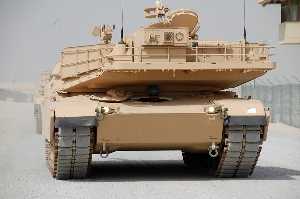
Washington -- The Army's next combat vehicle must perform through the full spectrum of Army operations, be designed to protect itself and the Soldier, and be built with a budget in mind.
Nearly 300 attendees gathered at an industry day Oct. 1 in Detroit to discuss the acquisition strategy for the Army's Ground Combat Vehicle. During that time, Army officials explained their vision of the GCV program and gave industry insight into what they can expect with the release of the request for proposal that will kick off the development of the new vehicle.
After the Manned Ground Vehicle component was cut from the Army's Future Combat Systems program in June 2009, the Army moved quickly to develop a new vehicle -- the Ground Combat Vehicle. The program released an RFP -- an invitation to industry to come forward with offers to develop the vehicle -- in February 2010. But that RFP was ultimately cancelled in August.
Army officials said they expected a new RFP would be released within 60 days of the August cancellation -- that places the release of the new RFP in November. Program managers say they expect that release date is still doable.
"We're still aiming for that," said Col. Andrew DiMarco, project manager for the GCV, during a telephone conference with media following the industry day. "But the caveat for that is -- what I don't want to do is to put something out on the street that isn't quite right."
While the GCV program is expected to eventually produce multiple vehicles with varying capabilities, the focus for the first block of GCV development is an infantry combat vehicle, said DiMarco.
"With the incremental approach to GCV capability, our increment or block, if you will, is focused on the infantry fighting vehicle," he said. "There may be other variants that are identified from a requirements perspective, and there may be other capabilities that emerge over time... our focus right now is on one GCV, and that is the infantry fighting vehicle."
Michael N. Smith, director of the Army Maneuver Center of Excellence, said the Army emphasized the importance of the infantry fighting vehicle to potential GCV contractors during the industry day.
"The requirement is that we need an infantry fighting vehicle that can deliver a squad to the battlefield, in an improvised-explosive-device environment -- realistically in an environment of anywhere along the continuum of operations under Army," Smith said.
Smith also said the Army already has "solutions" that can operate in an IED environment, but that those cannot operate across the full spectrum of operations the Army may be called on to operate in.
"So GCV ... as a platform, is designed to allow us to address ... that spectrum of operations, spectrum of conflict, while moving that squad to where it needs to be," Smith said.
He went on to say that Army leadership developed four imperatives for the GCV, and emphasized those to industry representatives. Those include capacity, force protection, full-spectrum operations and timing. Four imperatives, he said, which are "non-negotiables" with regard to GCV development.
Capacity, he said, means "a requirement to deliver the entire infantry squad on a single platform." The force-protection requirement is separate from vehicle survivability, he said, but rather is about ensuring safety for Soldiers.
"It's a force-protection requirement that links to ensuring that the infantry squad is in fact delivered and is not taken out because the vehicle does not have the requisite protection to ensure the squad members and the crew of the vehicle are able to accomplish their mission," Smith said.
"Full-spectrum operations" means the vehicle must be able to perform missions that include both offensive and defensive operations, as well as stability operations.
"From an operational perspective, (that) means I have to have modular and scalable capabilities," he said. Smith added that the vehicle must include "a whole suite of things to allow me to adapt the platform to accomplish the mission in a wide variety of environments and terrain sets."
Timing, Smith said, means ensuring the vehicle is developed in time to ensure the end product is still valid for the mission.
"If we take too long to develop something, then by the time we have the optimized solution, the environment has changed so significantly that that solution is no longer useful," he said.
Cost is another significant element in GCV development and will play a key role in the RFP when it is released.
"Our intent for this RFP is to give them a target range and to use that as part of assessing their proposals and making a determination -- among other factors, certainly -- who ultimately will be selected," DiMarco said.
The colonel said a specific price range for manufacture would be specified in the RFP, though he was unable to say what that range would be.
DiMarco also said the RFP would focus more on vehicle performance, rather than technology, allowing industry more flexibility to develop their own solutions for meeting the Army's needs. But to help with that, he said, the Army will again make available to industry research that was done in development of the MGV, formally part of FCS.
"We provided industry with access to I think what we called the 'MGV body of knowledge,'" he said. "That was a compilation of information about things that we did under the FCS MGV program. I believe it's still our intent to provide that body of knowledge to industry again."
US Army
06.10.2010